Botia: types of aquarium fish and features of their maintenance
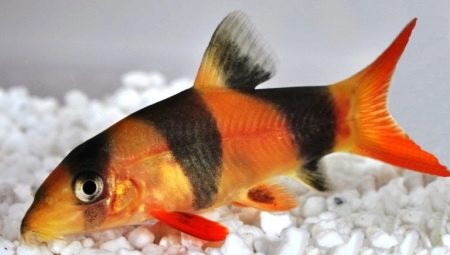
Botsy are very cheerful and perky fish, which are distinguished by their activity, curiosity and irrepressible temperament. They come from the warm waters of Southeast Asia, but when creating a favorable habitat, they can delight their owners for many years with an interesting appearance and funny behavior in aquariums.
Description
The aquarium fish, the maracanta botia, was discovered in Indonesia back in 1852, when the famous biologist Blacker gave its full description. This fish attracted the attention of the scientist with its bright colors, so very soon the battle migrated to the artificial reservoirs of the countries of the Old World, and from there it spread to Russia.
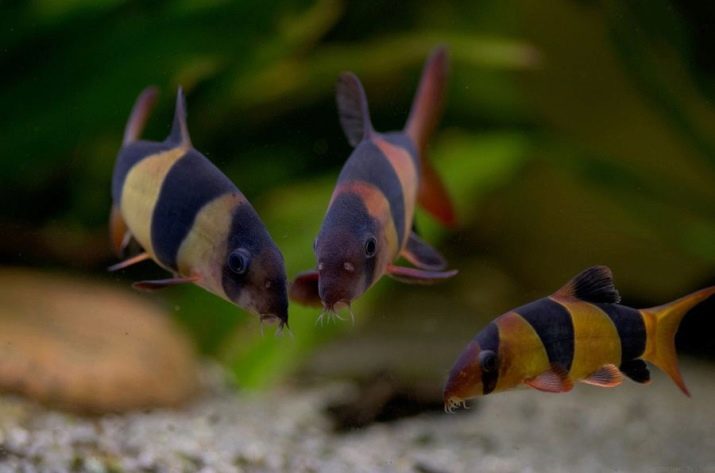
Botia is a large fish, in its natural environment it grows up to 40 cm, but in artificial reservoirs it is half as much. The length of an adult is approximately 20-25 cm. There is no pronounced sexual dimorphism; only specialists can distinguish a male from a female, and then only during the period when the fish becomes sexually mature.
The body is elongated, compressed on the sides, a mustache is located near the mouth, as a rule, drooping down. Thorns are located under the eye sockets, which serve as protection from aquatic predators. In the normal state, they are hardly noticeable, since they are covered with a dense leathery bag, but under stress and at the moment of danger they go out rather quickly. It lasts no more than a second. Nevertheless, when catching fish, you need to be extremely careful - the thorns can get tangled in the net and this will harm the fish.
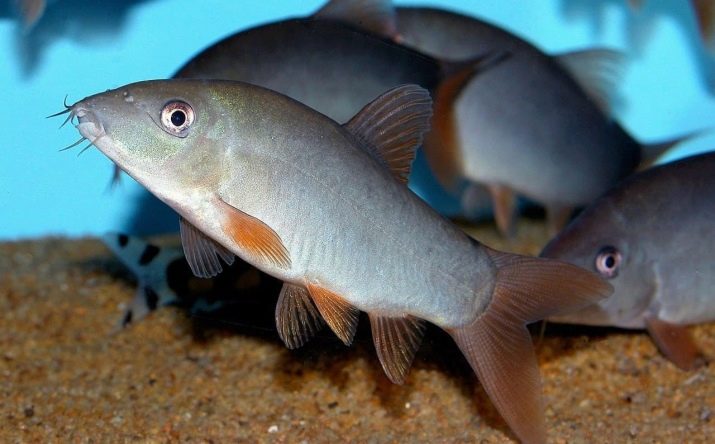
It is best to use plastic containers for catching.
Botsy look very impressive, they have a bright and rich color: three dark contrasting stripes are noticeable against a yellowish-red background, the tail and lower fins are bright red, which makes it even more decorative. Young individuals look especially colorful.
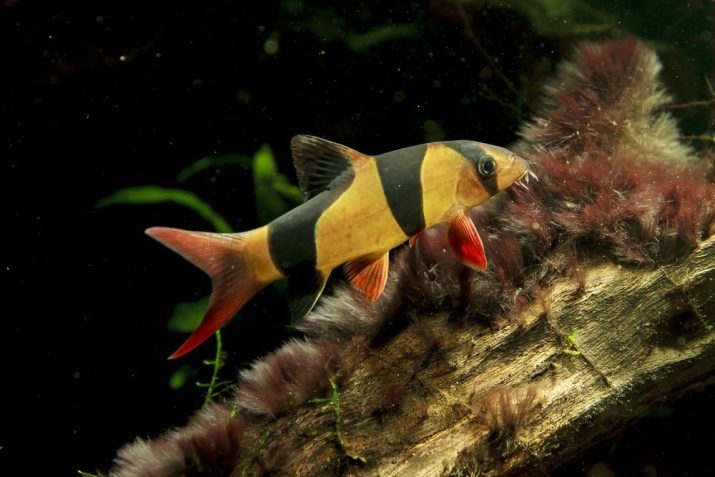
With the creation of favorable conditions for keeping them in captivity, they can live for quite a long time - up to 20 years. Over the years, the color loses its brightness a little, but even pale aquatic inhabitants look very beautiful.
Botsi are popular not only for their appearance. The behavior of fish is also of great interest. Agree, not every aquarist can calmly watch how his pet swims belly up, and the battles sleep in a similar position. They also love to relax on their side, mainly at the very bottom of the aquarium. If you do not know about such manners of the fish, then these pranks can seriously scare its owner.
Species overview
For breeding in an aquarium, several varieties of bots are used.
- Chess. The fish was discovered at the beginning of this century, and after 10 years it has gained great popularity among aquarists. Grows up to 10 cm.
- Burmese. This is one of the small representatives of fish, which in an adult state does not exceed 10 cm. It usually lives in a flock of 4-6 individuals, it is distinguished by its activity and exceptional aggressiveness.
- Botsiya zebra... In science, it is known as the striatal fight. These are pretty cute fish, the length of which does not exceed 8 cm in captivity. Unlike the chess varieties, zebras are distinguished by their peaceful and friendly disposition, and they can decorate any artificial reservoir with their appearance.
- Imperial... By nature, it is a peaceful fish, but if there are no shelters in the aquarium, it will show aggression.
- Marble. An individual up to 8 cm long, by nature peaceful, but inside its flock, fish can arrange fights, although they are not dangerous for other species.
- Clown. The most common and recognizable type of fighting, which is distinguished by its bright color, unusual behavior and excellent health. In captivity, it grows up to 20 cm, so it needs spacious containers.
- Modesta... Another common subspecies. It grows up to 22 cm. It is characterized by extreme aggressiveness, which can only be reduced by building a large number of all kinds of shelters.
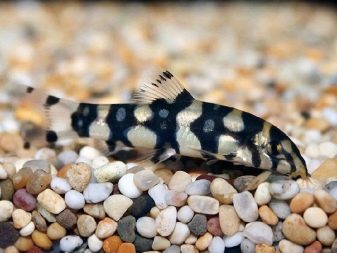
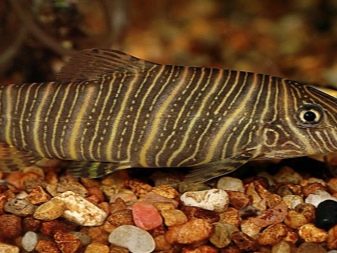
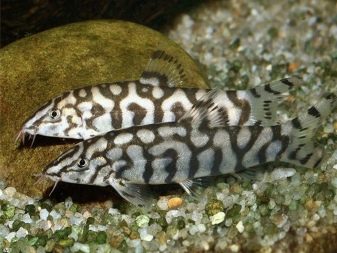
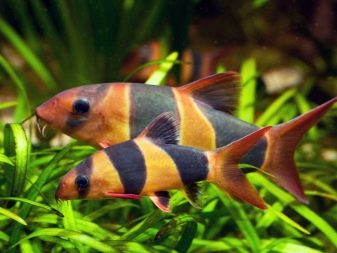
Aquarium keeping rules
Fight care is not difficult. In the natural environment, they live in rivers with clean water, so a large accumulation of organic matter, as it happens in a closed biocenosis of an aquarium, is not suitable for them. These pets require regular water changes. The fluid should be renewed every 7-10 days by about a third.
The optimal water temperature is considered to be a level of 25-30 degrees, the hardness parameters should not go beyond 5-12 units, and the acidity should be kept at around 6-6.5 pH.
Botsy need a lot of oxygen, so a powerful compressor must be present in the aquarium to create effective aeration. Breeders must constantly monitor the level of ammonia and nitrite - optimally, so that it is equal to zero. For any signs of an increase in performance you should promptly replace the water by 45-50%.
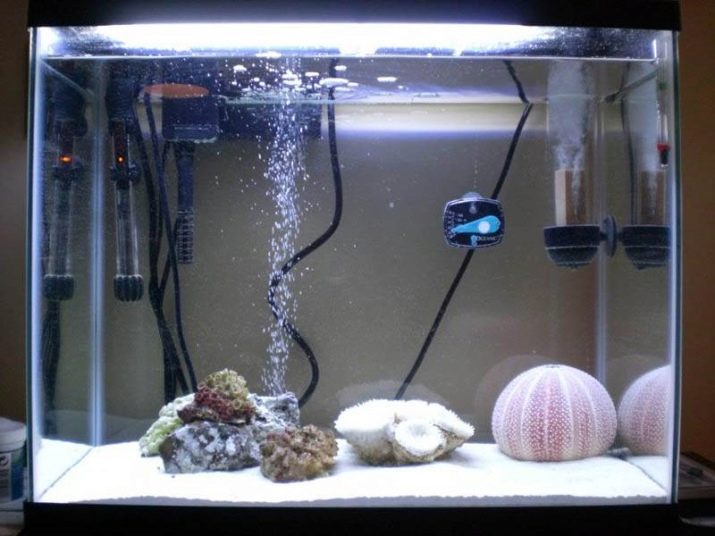
Bots are very fond of the movement of water in the aquarium, so when installing filters it will be useful to use additional pumps. Without a doubt, the sight of fish dancing in a stream of water will delight any aquarist.
Maracants are benthic animals, so they prefer to spend time in the lower layers of water. Soft soils are suitable for them, it is advisable to fill it with fine-grained pebbles or sand. The gravel must be rolled in. If the corners are sharp, then the fish will very quickly erase its antennae about it. In the absence of shelter, even the most peaceful individuals are capable of showing aggression, therefore stones, driftwood and other decorations must be placed in the aquarium. For this, it is advisable to use shelters made of granite, quartz or mica.And here sedimentary rocks, marble and lava will not work.
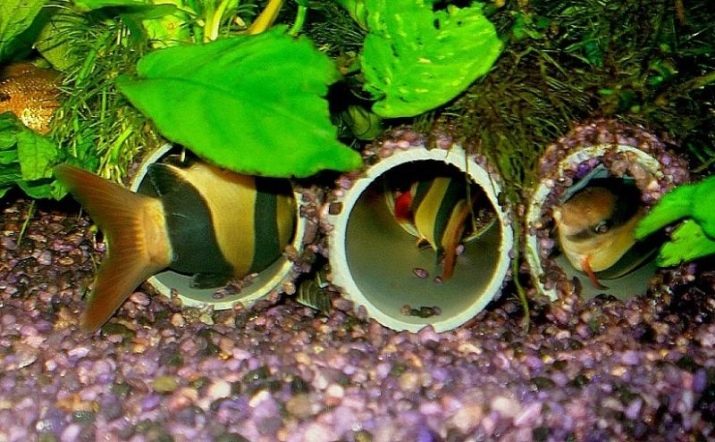
PVC pipes can be a good alternative to caves. As a decoration, you can use ferns, moss or anubis, fixed with a nylon thread.
Fights are not picky about plants - for them it does not matter whether they are alive or plastic. However, please be aware that they really like plant foods, therefore, any representatives of the aquatic flora in your aquarium will not live long - the battles will dig, pinch and drag them around the entire tank. It is unlikely that such a picture will correspond to your ideas about the aesthetics of an artificial reservoir.
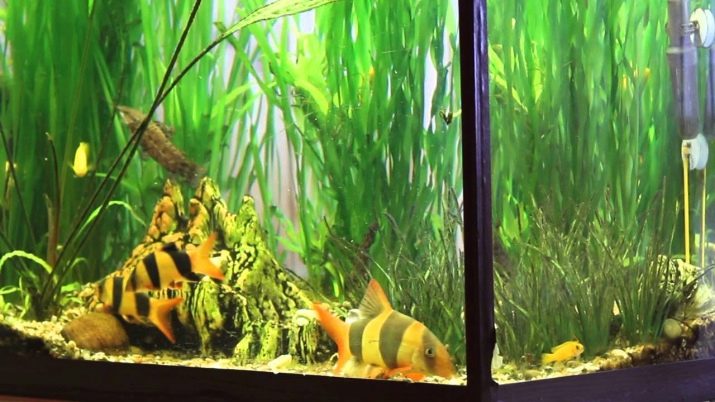
They are picky about food. You can feed your pets with dry cereals, frozen seafood and live insects - the most important thing is that the menu is balanced and the fish get all the nutrients they need, useful micro- and macroelements. Therefore, it is extremely important that bloodworms, worms, lettuce, as well as spinach and fresh vegetables (preferably zucchini and cucumbers) are certainly present in their diet.
From time to time, you can pamper your maracantes with melons - they love them very much.
Compatibility with other fish
Most species of botia are peaceful in nature, so these fish coexist well with many other aquatic inhabitants. However, it is unlikely that at least one of the maracantas will be able to refrain from biting the long tail of a goldfish or a veiltail, so you should not put them in the same tank. It is also better to keep small fish separately - loud clicking of fights can scare them.
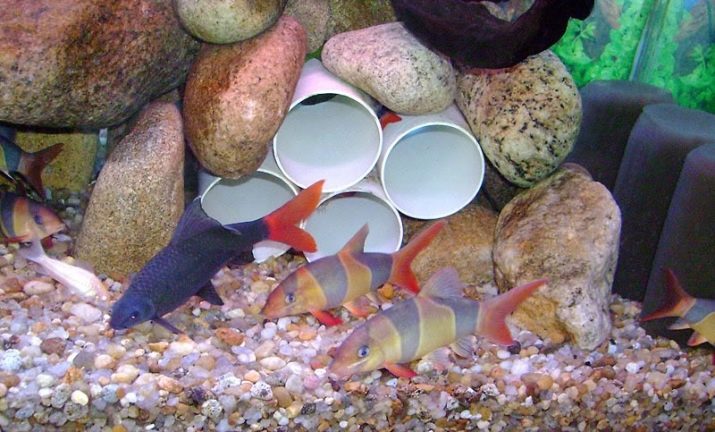
Clowns have their own specificity - they are extremely active, therefore, it is difficult to get along with the rest of the fish, especially if the neighbors are just as active and lively. It is not necessary to breed battles, cockerels or guppies in one tank, these fish will not find contact with cichlids. But representatives of carp and loach can become ideal companions - in such a tandem, conflicts will never arise.
Do not forget that battles are schooling fish, so you shouldn't start them one by one, for them it is extremely important for them to communicate with their "fellows in mind". If they always have their own company, then they will be friendly to their neighbors.
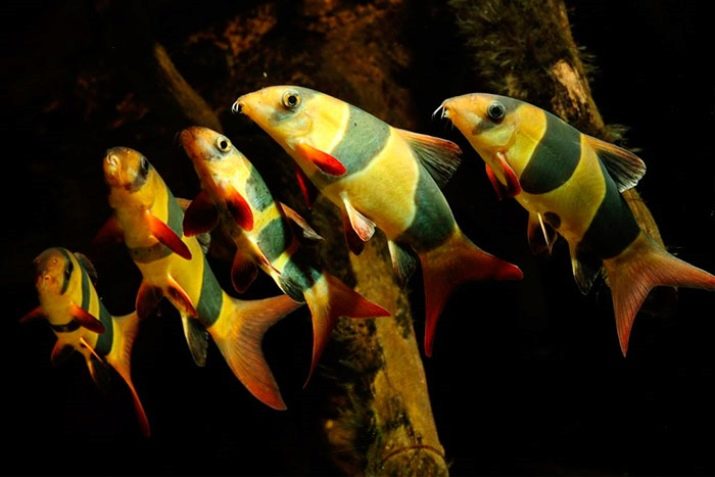
But when living alone, pets experience a lack of communication, which leads to manifestations of aggression and anger.
Breeding
It is quite difficult to breed a maracant at home, this is due to the fact that very specific conditions need to be recreated for these fish to spawn. Many famous clubs have tried to breed their clown fry and other fights for decades, but their attempts have failed one after another. Nowadays, artificial spawning grounds are being created, the biocenosis of which is as close as possible to natural, fish are injected with strong hormonal drugs, but few can boast that they successfully breed these fish.
Breeding fights at home is extremely problematic.
Even on highly specialized farms, breeding battles is considered a laborious process that does not always end successfully. In most cases, the fish that enter the aquarium were caught in their natural habitat and reared in captivity from fry.
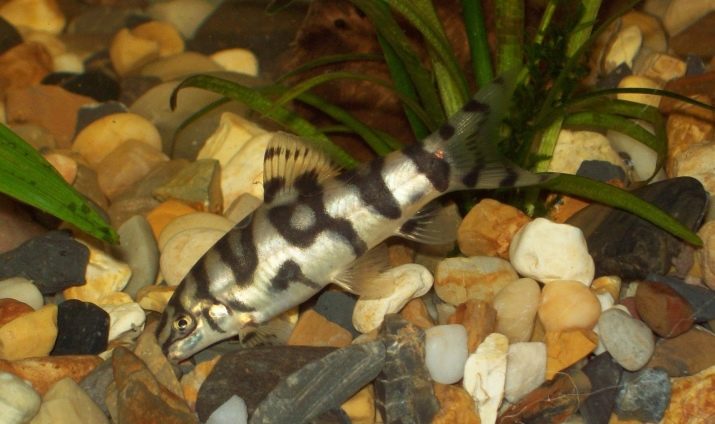
To date, only one case of successful breeding of battles in an aquarium has been officially recognized, this was done more than 30 years ago by the aquarist from Montreal Werner Novak. Once this breeder, having taken out an echinodorus bush from a container, found about 40 grown clown fry under it.
It is known that a powerful filtering unit with a peat filler was placed in an artificial reservoir, the acidity was 6.2, pH, the water hardness was kept at around 2 units, the temperature was set within 28-29 degrees.
The aquarist never found out exactly how the spawning took place, since the fish constantly took refuge among the snags and grottoes, going outside only in the evening to eat. They received shrimp pellets and mashed beef heart as the main food.
However, even if all these conditions were met, no one else was able to repeat this successful experience.
Based on observations of battles in wildlife, we can conclude that incubation of eggs lasts about 18-20 hours... The hatching larvae are rather small and prefer to congregate in the most shaded areas of the reservoir. After 4-5 days, the fry begins to swim.

The first month of life is the most critical for young animals. By the end of this period, the fighting reaches 7-15 mm and begins to acquire the parental color.
See below for the specifics of the fight.








